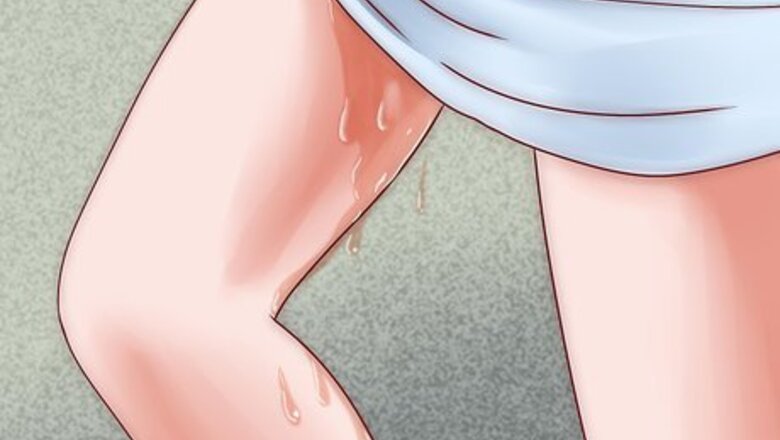
views
Recognizing Signs of Labor
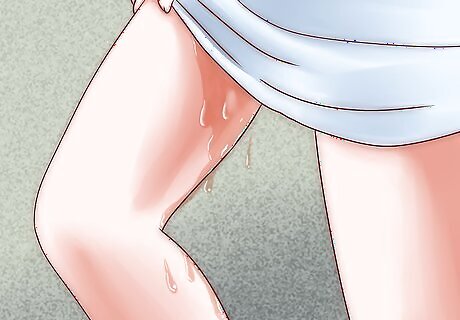
Check to see if your water has broken. Usually, most women recognize that labor is starting when they feel that their “water broke”. This is when the amniotic membranes rupture spontaneously. This event triggers the start of uterine contractions.

Keep track of any contractions you feel. Keep track of the frequency of your contractions. Initially, you may experience them every 10 to 15 minutes, but over time this will reduce to ever 2 to 3 minutes. Uterine contractions have been described as “cramping” , “ tightness in the abdomen” , “discomfort”, and a varying degree of pain, from mild to extreme. Uterine contractions in labor are measured by CTG (cardiotocography), with a device placed over the abdomen. This measures both uterine contractions and the fetal heart rate.

Know the difference between true contractions and Braxton-Hicks contractions. An important distinction must be made between true contractions, and so-called “false”, or Braxton-Hicks contractions, which occur only a few times during the day, without any increase in intensity or frequency. They usually appear within the first 26 weeks of pregnancy, but they can also appear later on. It is common for women to experience "false" contractions in the advanced pregnancy period, however these contractions can suddenly turn into labor contractions during the second pregnancy. Therefore, when you are becoming a mom for the second time, do not take your Braxton-Hicks contractions lightly. It could be a sign of the actual labor.

Check to see if you have lost your mucus plug. When you see that you have lost the mucus plug, you can expect that you’ll be in labor within a short span of time, usually within a few hours or a day or two. There will be small blood stains when you lose the mucus plug. During a second pregnancy, women tend to lose their mucus plug much earlier compared to the first pregnancy. The reason for this is that after the first pregnancy the muscles comprising the cervix are naturally looser than before and with all the rapid and frequent contractions, the cervix starts eroding at a faster rate than it did previously.
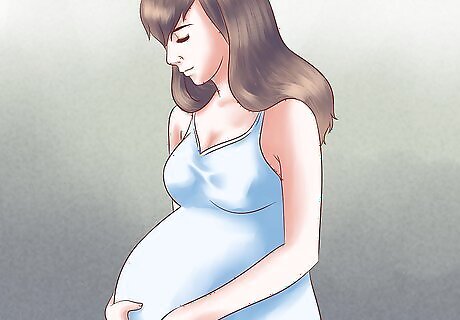
Take a look at your belly. You might see that your belly has drooped downwards and you can now breathe with ease. This is because the baby is descending into the pelvis, preparing for delivery. Also, you might feel the urgency to use the bathroom every 10-15 minutes. This is a clear indication that your baby is moving into the correct position to find her way out into the world.
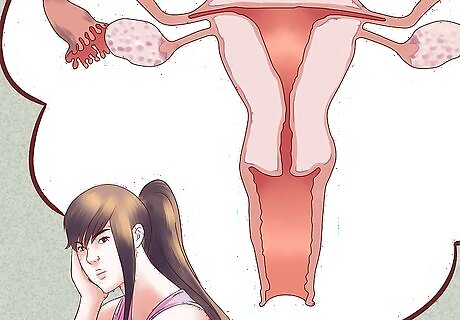
Consider whether your uterus feels “lighter”. It has been reported that many women feel as if their baby has become “lighter”. This is due to the fact that the head of the fetus has descended into the pelvis, to prepare for its delivery. In addition to this subjective feeling, urination may become much more frequent, due to the increased pressure on the bladder by the fetus.

Take note if you think your cervix is dilating. The cervix undergoes structural and functional changes when the above-mentioned events occur. When labor starts, the cervix gradually dilates to allow for the expulsion of the fetus. In the beginning, the cervix is usually only dilated by a few centimeters. When it reaches 10 centimeters (3.9 in), this usually means that you are ready to give birth.
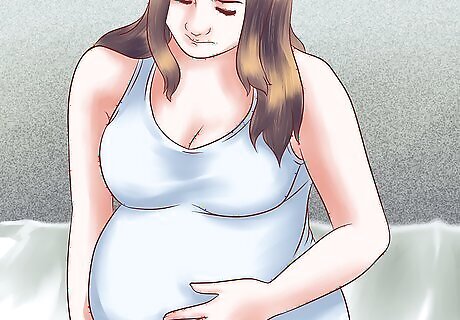
Be aware that cervical insufficiency can occur. The occurrence of cervical dilatation without uterine contractions may suggest cervical insufficiency.This is when cervical shortening, funneling, and/or cervical dilatation occurs during the second trimester of pregnancy. This conditions needs to be promptly evaluated by a medical professional, as it could negatively affect the normal development of the fetus and even lead to miscarriage. Cervical insufficiency is one of the most common causes of miscarriage and preterm birth during the second trimester. Hence, diagnosing cervical insufficiency early is very important. It can be diagnosed during routine check-ups by the physician who is monitoring the pregnancy, upon inspection and physical examination. Patients with cervical insufficiency complain of mild cramping in the lower abdomen or vagina, and together with patient history can point to this diagnosis. Risk factors for developing cervical insufficiency include infection, history of cervical surgery and trauma and cervical injury during previous births.
Seeking a Medical Diagnosis
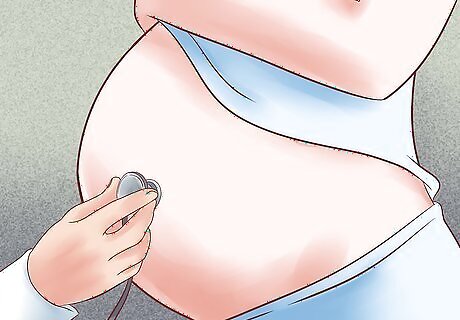
Consider getting an FFN. If you wish to find out for certain whether you are in true labor or not, there are some advanced diagnostic procedures that you can opt for such as FFN or Fetal Fibro Nectin Test. This test won’t be able to tell you if you are currently in labor, but it will definitely confirm if you are not. This test is useful because when you are in your initial stages of preterm labor, telling labor can be very difficult using symptoms or pelvic examinations alone. A negative FFN Report will relax you and reassure you that you won’t deliver your baby for at least another week or two.

Have your midwife or nurse check your cervix. The nurse or midwife will be able to feel how much you have dilated by examining your cervix. In most cases, when your midwife finds that your cervix has dilated to between 1 to 3 centimeters (0.4 to 1.2 in), she will inform you that you are in the first stage of labor. When she feels that your cervix has opened up to an extent ranging between 4 to 7 centimeters (1.6 to 2.8 in), she will probably tell you that you have entered your active or second labor stage. When she feels that your cervix dilation is ranging to between 8 to 10 centimeters (3.1 to 3.9 in), she will definitely tell you that it’s time for the baby to come out!

Have your midwife or nurse assess the position of your baby. Your midwife also has experience in understanding whether your baby is pointing downwards and whether its head is engaged in the pelvis. The midwife may get down on her knees and feel your lower belly, above your bladder or insert her fingers around your groins to feel the baby’s head and assess what percentage has been engaged. These examinations will help to confirm the fact that you are in labor and even tell you what stage of labor you're at.
Knowing Common Differences Between First and Second Pregnancies
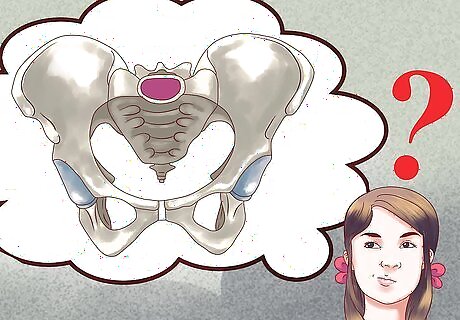
Understand that your pelvis might not get engaged immediately during your second labor. You’ll notice certain differences between your first pregnancy and your second pregnancy which might raise many queries in your mind. At the time of your first pregnancy, your baby’s head becomes engaged in your pelvis more quickly when compared to your second pregnancy. In the case of second pregnancies, the head might not become engaged until your labor starts.
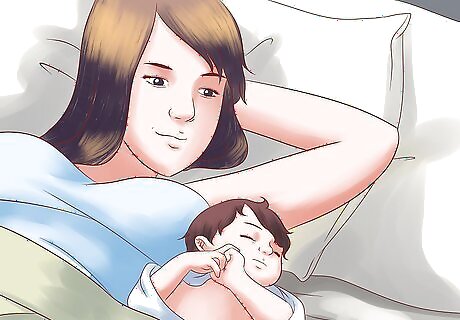
Be prepared for your second labor to be potentially faster than your first. Second labors tend to proceed more quickly and last for a shorter amount of time when compared to the first. This is because the cervix muscles are thicker and take more time to dilate when you are in your first labor, but in the subsequent delivery the cervix dilates faster. In a second labor, the vaginal muscles and the muscles of the pelvic floor are already stretched by the previous birth and have become laxer. This helps to make your second baby arrive more quickly and to make the advanced labor stages less difficult for you.
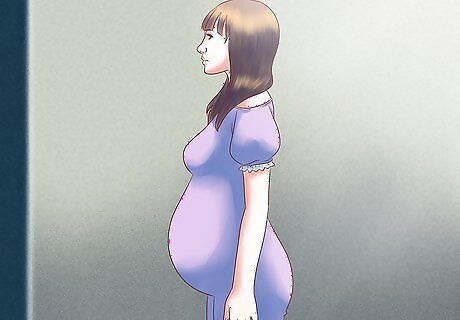
Get into a position that will reduce your chances of getting an episiotomy. If you have had an episiotomy or tear during your first delivery and are still traumatized by the experience, the best tip to escape it during your second baby is to get into an upright posture and push while you are in the labor’s second stage. When you take an upright posture, you are actually using Newton’s simple scientific theory of gravity, the force which pulls your baby out into this world without any cuts or tears on your body! However, this is not a fool-proof way of avoiding episiotomy. Some women still needs an episiotomy despite taking these measures.




















Comments
0 comment